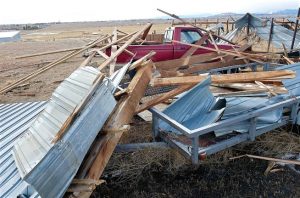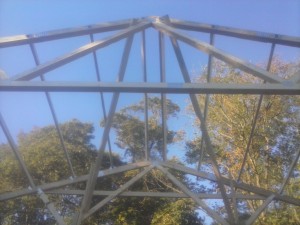Blower Door Testing Your New Barndominium
You only get one chance to put together your barndominium, shouse or post frame home envelope correctly. Once you conceal it with siding and shielding, it’s nearly impossible to fix. So, by not focusing on this crucial building process aspect, you’re ultimately creating a path to a leaky barndominium. This can lead to poor indoor air quality (IAQ), moisture deposits on cold surfaces, mold and even affect health.
Exterior building enclosure leakage impacts our health and well-being. Gaps and cracks in your barndominium’s air can cause several issues. These gaps aren’t just a place for bugs, dust, and pollen to get in. They allow cold or warm air, moisture, and contaminants to enter as well. Depending on what climate you live in, this leakage can have detrimental effects. In humid climates, high envelope leakage can cause excessive moisture amounts to infiltrate your barndominium, making it uncomfortably sticky and more susceptible to issues such as mold. In drier climates, the opposite is true, dry air comes in during winter months and makes for an uncomfortably dry environment and can cause dry sinuses, static electricity, and even increase viral spread. These leaks also impact energy usage, as heated or cooled air escapes your barndominium more quickly, increasing air conditioner or heater runtimes.
This is why a blower door test is so critical to your new barndominium. Industry professionals have long been aware of better duct sealing needs, enclosure sealing, and improved indoor air quality. This test determines if it has happened on a project.
A blower door test is used on buildings in order to quantify air leakage amounts through its enclosure. During this test, a calibrated fan is installed in an otherwise sealed door or window, while all other exterior openings are closed. Once the fan is turned on, it creates a pressure difference between outside and inside. Typically done under negative pressure, this fan sucks air out of your barndominium, causing it to come in through whatever pathways it can find — many unintentional.
These unintentional leaks are what professionals measure when they conduct these tests. While pressure inside is steady, air going through the fan is the sum of all building leaks. Because the fan is calibrated, its airflow at various pressures is known. With a pressure differential constant, then we know air volume moving through a fan is the same as air volume leaking through cracks and gaps in your barndominium.
These tests define indoor space by separating it from outdoors and quantifying leakage. Remember: you can’t improve what you can’t measure. Enclosure testing is more than just getting a number, though. Once leakage is located, recommendations can be made to address those areas. Air coming in through an improperly closed is much different than air coming in through a poorly sealed attic filled with fiberglass insulation. Airflow through a leaky window isn’t going to pick up pollutants or potentially cause materials to become wet like an attic air leak might.
People who care about health, comfort and/or efficiency should consider testing their new barndominium to see how it measures and locate improvable aspects. Blower door testing is a relatively new United States construction code requirement. While many builders get blower door tests done on their builds, not as many stick around and watch this process. For builders, watching this test can help improve their processes for their next build.
Come back tomorrow for the final part of blower door testing.








